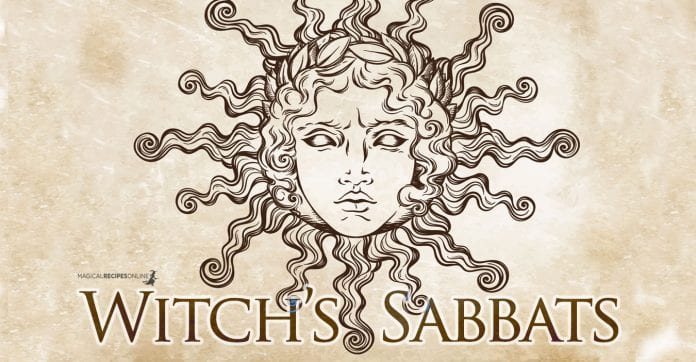The Witch’s Sabbats Frequently Asked Questions
The third instalment of my Frequently Asked Questions series of article looks at the magical celebrations of the Wheel of the Year. The Sabbats of the Witches!
Q: What is a Sabbat?
A: The sabbats are solar and agricultural based celebrations; they are very earth orientated. They represent the changing of the seasons and the harvests, they celebrate the passage of the sun and it’s waxing and waning strength.
Q: What do Sabbats mean?
A: In a very simple term it is something that celebrates the turning of the wheel of the Year. In out modern world we identify the word ‘Sabbath’ is it’s root term, but it is more likely that the origins predate the Judeo-Christian use of the word. The word ‘sabatu‘ in Greek is considered as the most likely origin. The word Sabatu means to rest.
Q: What is a Sabbat for?
A: Traditionally the Sabbats are a chance to celebrate and interact socially within the community. In the past these would be gatherings in the community to celebrate the agricultural progresses, the cycle of birth, life, death and rebirth.
Q: Can you celebrate if you are a solitary practitioner?
A: Of course you can. It comes with it’s own challenges, but there is no reason why you can’t celebrate. I am a solitary practitioner myself and I have always worshipped on my own. There is a myriad of groups and events on Facebook that you can join in on; and on an energy level you can celebrate with witches all over the world. You can’t dance around a maypole alone, but you can bring your energy to a group and celebrate alongside witches the whole world over.
Q: Where does the Wheel of the Year begin?
A: If you are 100 witches you will probably get 100 different answers. The Wheel of the Year is cyclical, and has no real beginning and no real end, it is continuous cycle, turning eternally. We as humans associate birth as the beginning anddeath as he end , but in nature a death is an opportunity for another birth or the creation of something new. Many witches consider that Samhain is the beginning of the wheel of the year because it is most associated with death, and as the cycle moves, it means that Yule is the proverbial start of the wheel. A lot of Witches see Samhain as the Witches New Year.
**NOTE** Ancient Celts believed that sundown was the start of the next day, so every night became the beginning of the next day. This is why many sources say that Sabbats start at sundown on the day before it’s traditional date. So; forexample Samhain begins at sundown on the 30th October.
Others believe that be commencement of the wheel of the year is at Imbolc, as it is known to have close associations with the start of spring; which is a time of birth and rebirth. Imbolc is also the first sabbat in the Gregorian calendar

Q: How do you view the Sabbats?
A: Ah! Umm! When I envision the Wheel of the Year I see a giant circle, it has no end and no beginning. As the seasons change faultlessly each sabbat has it’s own place on this giant circle. Each sabbat has it’s opposing energy, and if you write the names equally around the circle you can see which sabbat opposes which.
Q: I read that there are two kinds of Sabbats?
A: For the Celtic Tradition, there are two types of Sabbats, the Lesser Sabbats or Cross-Quarter days and the Greater Sabbats or Quarter days. Lesser and Greater Sabbats may be reversed in other ancient Traditions.
-
The Lesser Sabbats are Litha, Yule, Ostara and Mabon. These days mark the passage of the sun though the cycle of the year. The Sun’s strength is greatest at Litha, weakest at Yule and equal at each of the equinoxes.
-
The Greater Sabbats are Imbolc, Beltane, Lughnasadh and Samhain. These days mark the most important days in the agricultural calendar. These were also the days where the English would pay rent to their landlords.
We see the sabbats in a different light in our modern lives because we don’t have the same lives as the ancients. We don’t have to grow or kill our own food, we don’t have to rear animals for slaughter. Many often use things to representthese time of years by popping into a supermarket and grabbing a bottle of wine (Lughnasadh) or a pumpkin (Samhain). We don’t have the same struggles today, but we can still connect to the ancient energy of each day as time has notdiminished it’s power or meaning.

